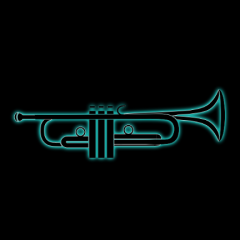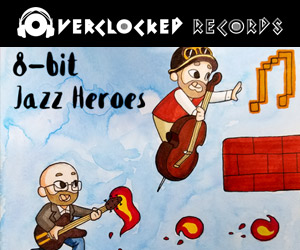Final Fantasy X "Yuna at Zanarkand, Her Mind on Lost Friends" 3:56
By sui
Arranging the music of one song...
"At Zanarkand"
Primary Game: Final Fantasy X (Square , 2001, PS2), music by Junya Nakano, Masashi Hamauzu, Nobuo UematsuPosted 2023-02-21, evaluated by the judges panel
Newcomer sui (Alex) wasn't deterred by his initial FFVI submission not making past the judges panel, and we're happy to say he's back, making an emotive debut via this nicely personalized classical trio rendition of an Uematsu instant classic from FFX:
"On to my second submission, again with Final Fantasy.
In my quest to improve my counterpoint writing, an original piano trio arrangement of Final Fantasy 10's "To Zanarkand", titled "Yuna at Zanarkand, Her Mind on Lost Friends". I tried my hand at a classical piano trio setup, i.e. piano, violin, and cello. All in all the piece took around 30 hours to finish. There were several challenges during the writing process:
- No one wants to listen to the original songs just with an added cello base note and the violin playing the melody. This is supposed to be an exercise in counterpoint writing, so all instruments should be interesting to listen to.
- There are only 3 instruments to work with, so you better make every note count.
- Give every instrument and every instrument combination their time to lead and shine.
- Make the two iterations of song sufficiently different. Copypaste is not allowed.
- Keep everything humanly playable, especially the violin's multiple stops. In mean, the 4 octave jump in the piano's left hand at 3:07 should still work at that speed, right?"
I actually had a quick discussion last week with a great performer about their reservations on submitting to OCR, because many musicians mistakenly assume that the most liberal, genre-bending ReMixes are the only arrangement approaches we accept. The catalog indeed has several recent tracks that prove otherwise, and Alex's debut is another great example of successful submissions not needing to be about drastic melodic or genre changes. Besides the compositional experiment, sui also steered into (and jumped over) some production-based hurdles, opting for modeled instruments over samples. sui gave a tools rundown and shared both the technical challenges and the exciting outcomes of his new approach:
"VST instruments used:
Main VST effects used:
All instruments are entirely modeled, i.e. synthesized on the fly at runtime and not recorded samples, and I don't think I can ever go back to sample libraries. This was my first time handling this kind of instrument, so getting to understand their behavior and reworking MIDI CC automations accordingly actually took up most of the production time. And, even then, I feel that at some points getting out of the uncanny valley required too difficult of a climb for me. The advantage of modeled instruments is that they do exactly what you tell them to do, so you are never held back by the recorded samples from creating the sound you want. It's amazing not having to fight them to get them to do what I want or wrestle with sampling limitations and inconsistencies. However, the flip side of that advantage is that they only do what you tell them to do, so you better know how to exactly draw in those CC curves to play the vibrato like a human would. You have to explicitely tell them what to do in excruciating detail.
The piano I'm using is Pianotec from Modartt. The strings are Audio Modeling SWAM and I don't think I will ever buy sampled strings again. Modeled instruments are just so much more enjoyable to use.
I've played the violin myself many years ago, and sampled solo strings just make me want to pull my hair out. If you know what the instrument is capable of, the limitations and one-off sampling issues just drive you nuts. The SWAM solo strings are the first I've actually enjoyed using.
It was a lot of fun and a great exercise to bounce the melodies between the different instruments to give them all their spotlights. Spinning counterpoints from previous melody snippets is such a great cheat.
In the end, I think I still got it into a presentable state. If you can imagine Yuna breaking into sobbing at 2:57 and screaming her heart out in tears at 3:05, then I believe I've done an OK job."
Before this was submitted, several ReMixers gave feedback and praised the work-in-progress piece in our Workshop forums, and the good vibes continued on the judges panel, with MindWanderer strongly putting over sui's modeled instrument experimentation:
"Absolutely stunning synthesized instrumentation. There are times you can tell the violin is fake, but a lot of the time, it can pass for real, and even when it sounds fake, it's not that obvious unless you're listening for it. This might be my gold standard for exposed virtual instruments going forward. [...] The structure is conservative, but the part writing and emotion put this well over the bar as far as interpretation go. [...] Superb skill on display on every level here."
prophetik music was full of praise for the techniques of the more interpretive second half, and eloquently described how an approach like this fits our standards:
"2:05 surprised me since it's essentially the first time that the arrangement strays from the original. the richer tone gained by using the lower range here is great. the doublestops in the violin are probably not super attainable by one player, but still a neat idea. adding the initial melodic lick in the cello under the C theme in the violin at 2:55 is superb work. 3:10's harmonic is a great idea and sounds great. i didn't think it was too loud, it's idiomatic and handled well.
this is indeed a conservative arrangement overall, from the perspective of what the original has and what's included here. i'd argue however that the contrapunctal additions and especially the performance nuances added via space, timing, and tempi changes are very much transformative. i am absolutely shattered that we're not getting a live version of this by three players in the same room (or maybe four, all told), which i think would be just incredible, but as it is this is excellent and well above my bar throughout."
We've always said (by way of our Submission Standards) that there's more than one way to interpretively arrange and personalize a game music composition, so we're proud to post this careful and beautiful first OC ReMix from sui that stretched his talents, added more skills to his repetoire, and clearly sounds touching and heartfelt. Did you cry? Hey now, don't despair over there, dear friend! We hope you've enjoyed our February spotlight on debuting ReMixers. We're not done yet(!), as we've got one at least more FF-inspired piece on deck as well as a LONG overdue PC game debut!
Discussion

on 2024-03-29 12:01:26
The opening to Zanarkand is burned into my psyche. This was a very rich and lovely rendition of the classic tune. Good stuff!

on 2023-02-26 10:18:26
Stopped by to make a TNG reference. Glad to see we’re all on the same page here.
Also, having spent a lot of time in Logic over the past couple
months, it’s nice hearing about someone else’s sequencing
drudgery and also seeing it have a tangible, positive outcome.
Nice work. ![]()

on 2023-02-22 10:45:01
To be honest I also just yoinked that idea from a Youtube video where it was explained as the orchestra following the conducter who is also not a perfect metronome. Same thing still applies if you don't have a conductor but your partner instruments to follow.
This is what the tempo looks like from start to finish. There's really no pattern to the changes, and that's kind of the point. Just an avarage target tempo that the gets played around.
And while I was in the project anyway, this is what the violin's automations look like during the climax at around 2:52. From the top it's bow speed (think volume), vibrato amplitude, vibrato speed, bow pressure and bow position between bridge and finger board. So yeah, this is where those 30 hours went...

on 2023-02-22 09:36:12
7 hours ago, suikun said:This emulates that the performers are listening to each other and adjusting all the time to play in sync. It's such a subtle change and the listener can't put their finger on it, but helps immensely with realism.
this is a really insightful idea that i've never considered. i recognized the consistent flex of time but didn't really intuit how much it mattered until i'm thinking about it now.

on 2023-02-22 01:50:45
Thanks everyone for having me!
The title is indeed a reference to the TNG episode, but I didn't expect people to actually pick up on it. I'm not the biggest Star Trek buff, but I loved the concept of that episode. Just like they used stories and metaphors to convey meaning, I wanted to put this image into the listener's head of Yuna revisiting the ruins of Zanarkand and reminiscing about her journey.
One little musical easter egg I put in at 2:52 in the cello is just the first four notes of the chorus of Suteki Da Ne, which I thought was fitting to have just before Yuna's imagined breakdown right at the next bar. This is totally not a failed attempt at creating a counterpoint line from the entire chorus _
Regarding all the humanisation and execution of the strings I very much drew on my experience playing the violin myself. I never went beyond somewhat advanced intermediate, so I also listened to several performances especially by Hilary Hahn and paid a lot of attention to how a professional does the vibrato.
One of the very important tricks is never letting any MIDI CC data become flat for vibrato and bow pressure. There should always be some movement over time, even if it's just by 2 to 3 points over a long sustain. This also applies to the BPM. It's actually a rather jagged zig-zag curve with fluctiations of as much as +-10% over a single bar. This emulates that the performers are listening to each other and adjusting all the time to play in sync. It's such a subtle change and the listener can't put their finger on it, but helps immensely with realism. This works for fully orchestrated pieces as well.

on 2023-02-21 17:41:25
50 minutes ago, djpretzel said:Speaking of geeking out, for the life of me I can't read this mix title without thinking of TNG's "Darmok and Jalad at Tanagra"

His eyes open!
As soon as I saw the title I wondered what kind of ReMix would reference a TNG episode that way.
Unintentional Star Tek pun or not, this is a fantastic effort by @suikun. Keep the good stuff coming!

on 2023-02-21 16:47:29
Superb debut from @suikun - I have Pianoteq
AND the SWAM plugins, and I haven't been able to get them to
sound nearly this good ![]() I'd love to see a project file or screenshots of some of
the automation curves; as he writes, physically-modeled
instruments are like a double-edged sword in that they
can do anything you tell them to are more flexible than
sample-based alternatives... BUT you have to know what to tell
them to do! I think having a background actually playing violin
must help; I find the SWAM brass instruments more intuitive,
probably because I played euphonium. At any rate, this sounds
excellent, and is exposed articulated in ways that require and
benefit from such flexibility. The verb/space adds realism and
unifies the three instruments, and I love the super-high sustain
note. I've been an evangelist for physical modeling for a long
time, and while they're not cheap, Modartt SWAM represent the
state of the art. I think eventually we'll have an AI layer that
can add artifacts and increase realism even further, or a hybrid
approach that also employs samples in some form (technically the
SWAM flutes do this, on the attacks) - it's all very neat stuff,
and I love to geek out on it...
I'd love to see a project file or screenshots of some of
the automation curves; as he writes, physically-modeled
instruments are like a double-edged sword in that they
can do anything you tell them to are more flexible than
sample-based alternatives... BUT you have to know what to tell
them to do! I think having a background actually playing violin
must help; I find the SWAM brass instruments more intuitive,
probably because I played euphonium. At any rate, this sounds
excellent, and is exposed articulated in ways that require and
benefit from such flexibility. The verb/space adds realism and
unifies the three instruments, and I love the super-high sustain
note. I've been an evangelist for physical modeling for a long
time, and while they're not cheap, Modartt SWAM represent the
state of the art. I think eventually we'll have an AI layer that
can add artifacts and increase realism even further, or a hybrid
approach that also employs samples in some form (technically the
SWAM flutes do this, on the attacks) - it's all very neat stuff,
and I love to geek out on it...
Speaking of geeking out, for the life of me I can't read
this mix title without thinking of TNG's "Darmok
and Jalad at Tanagra" ![]()
Sources Arranged (1 Song)
- Primary Game:
-
Final Fantasy X (Square
, 2001,
PS2)
Music by Junya Nakano,Masashi Hamauzu,Nobuo Uematsu
- Songs:
- "At Zanarkand"
Tags (8)
- Genre:
- Chamber,Classical
- Mood:
- Mellow,Solemn
- Instrumentation:
- Cello,Piano,Violin
- Additional:
- Arrangement > Trio
File Information
- Name:
- Final_Fantasy_10_Yuna_at_Zanarkand_Her_Mind_on_Lost_Friends_OC_ReMix.mp3
- Size:
- 6,271,319 bytes
- MD5:
- c94939a0e93f58f6e358275983476a34
- Bitrate:
- 209Kbps
- Duration:
- 3:56
Download
- Size: 6,271,319 bytes
- MD5 Checksum: c94939a0e93f58f6e358275983476a34
Right-click one of the mirror links above and select "Save Link As" or "Save Target As"!!
Help us save bandwidth - using our torrents saves us bandwidth and lets you download multiple mixes as a single download. Use the tracker below and scroll for more information, or visit https://bt.ocremix.org directly, and please don't forget to help us seed!!
ocremix.org is dedicated to the appreciation and promotion of video game music as an art form. more...
Please support us on Patreon if you can!
Content Policy
(Submission Agreement and Terms of Use)
Page generated Mon, 21 Apr 2025 09:33:13 +0000 in 0.0184 seconds
All compositions, arrangements, images, and trademarks are copyright their respective owners. Original content is copyright OverClocked ReMix, LLC. For information on RSS and JavaScript news feeds, linking to us, etc. please refer to resources for webmasters. Please refer to the Info section of the site and the FAQ available there for information about the site's history, features, and policies.

2023_02_2216_21_51.thumb.png.f8ac3a8dae22392a5bcc29122d439eff.png)

